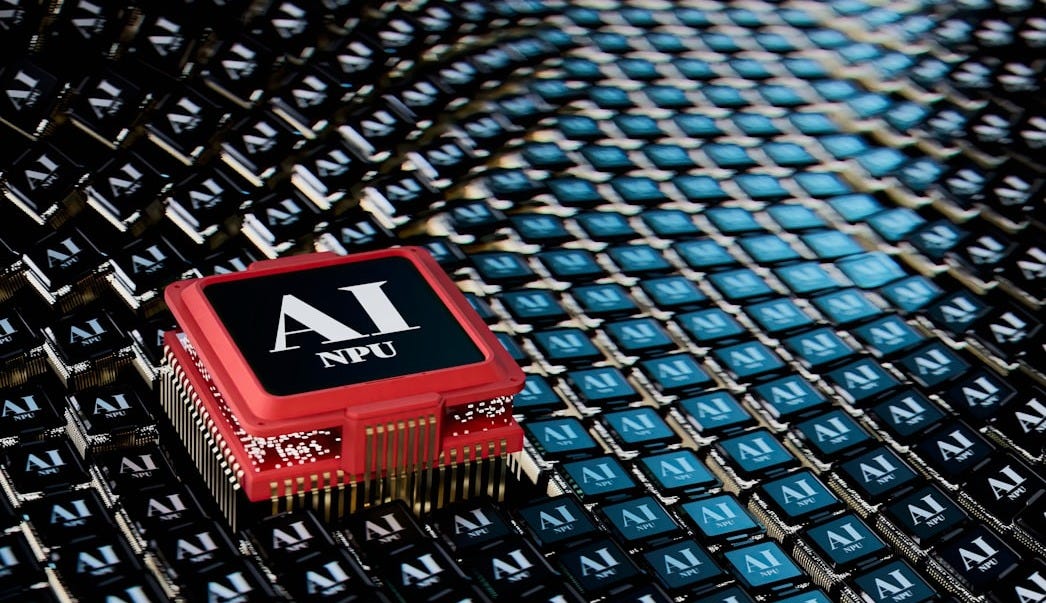TSMC - Closing the Valuation Gap
TSMC's valuation discount to its AI peers is unjustified and set to narrow, positioning it to outperform Nvidia.

Recent developments and exposure to emerging AI end markets, such as consumer devices, strengthen the case for a narrowing of Taiwan Semiconductor Manufacturing Corp.’s (TSMC) valuation discount to its AI chip peers, positioning its stock to outperform Nvidia and Broadcom. Despite the pullback in Nvidia, Broadcom, and Marvell’s share prices, these stocks still trade at a significant premium to TSMC, with 2025 price-to-earnings multiples of 24–28x, compared to TSMC at 18x.
Strength in Numbers - A Competitive Edge
The latest results from TSMC's key AI chip customers - Nvidia, Marvell, and Broadcom - reinforce the argument that TSMC's valuation discount is unjustified. The mixed reactions to these companies' earnings reflect their individual fundamentals and perceived risk, not TSMC’s fundamental strength.
Regardless of whether demand for Nvidia’s GPUs or custom AI chips grows at a faster pace —or whether Broadcom and Marvell or Taiwanese competitors like Alchip and Mediatek are gaining ground in the custom AI chip market—TSMC, with its near monopoly in advance foundry capacity, remains the ultimate winner. The contrasting investor reactions to Nvidia and Broadcom’s latest earnings underscore this point.
Risks to Nvidia’s revenue trajectory include the growing adoption of custom AI chips and the threat to China-linked revenue. Nvidia revenue is projected at approximately $200 billion this fiscal year, with a substantial $140 billion in gross profit. This profit pool represents a significant cost for customers, creating a strong incentive for cloud players to explore custom AI chip alternatives from companies like Broadcom and Marvell to lower AI compute costs and increase competitive pressure on Nvidia.
Nvidia’s more immediate and greater challenge is the growing risk to its China-sourced revenue, both direct and indirect (via Singapore), which accounted for 31% of Nvidia’s total revenue in FY25. Sales to Singapore surged 3.5x year-over-year—outpacing overall revenue growth—making it Nvidia’s second-largest market at 18% of total revenue. This revenue surge is widely attributed to the use of Singapore as a transshipment hub to circumvent U.S. export restrictions, putting this revenue stream at increasing risk as the May 15, 2025 compliance deadline for the Framework for the Diffusion of Advanced Artificial Intelligence Technology export restrictions approaches.
In contrast, Broadcom recent commentary signals faster than expected growth in its AI chip business, driving increased demand for TSMC’s foundry service. On its earnings call, Broadcom’s management disclosed that its custom AI chip customer base has expanded from two to four incremental engagements, totaling seven existing and new engagements.
As the dominant supplier of advanced foundry capacity, TSMC benefits from a diversified customer base and broad end-market exposure, reducing its reliance on any single customer and lowering business risk. If Nvidia’s China revenue comes under pressure, the impact on TSMC will be far less severe and could be offset by increased demand from other customers, such as Broadcom. This stronger position in the AI supply chain and greater revenue visibility are variables that strengthen the case that the stock warrants a comparable valuation to its customers.
Catalyst on the Horizon
While TSMC’s economic moat and competitive position alone justify a narrowing of its valuation discount to its peers, the more tangible near term catalyst could be the shift in the AI investment theme from infrastructure buildout to applications. As highlighted in my post Surf's up- Catch the AI Smartphone Wave, technological breakthroughs in AI model efficiency are set to make larger AI models more viable for on-device processing. This will enable more advanced on-device AI features and applications, driving growth in AI smartphones and consumer devices.
With 35% of TSMC’s revenue coming from smartphones, this shift will expand TSMC’s AI addressable market beyond AI infrastructure, positioning it as a key beneficiary of the next wave of AI adoption. TSMC’s exposure to consumer devices not only provides a buffer against the risk of a slowdown in AI compute infrastructure spending, but also offers potential upside to revenue expectations as more advanced on-device AI features and applications drive stronger-than-expected smartphone sales in the second half of 2025 and into 2026.
Framing the China Risk
TSMC’s valuation discount has long reflected the risk of Chinese military aggression against Taiwan, yet this same risk is not typically reflected in its customers’ stock valuations despite their direct and immediate exposure to this risk. As highlighted in my post Taiwan is Arrakis, this risk has increased in recent years. However, the near term probability of conflict remains relatively low since almost any scenario involving a military confrontation would be a losing proposition for all parties—the U.S., China, Taiwan, and the global economy.
The contradiction is that while an invasion would be profoundly negative for TSMC, it would also severely impact Nvidia, Broadcom, and other key customers—implying that the valuation premium of TSMC’s customers understates this shared geopolitical risk relative to TSMC.
TSMC recently announced an additional $100 billion investment in the U.S., raising its total planned U.S. investment to $165 billion. While this diversifies TSMC’s manufacturing footprint away from Taiwan, this additional $100 billion is equivalent to only about three years of TSMC’s total capex. TSMC will continue to invest in Taiwan, consequently Taiwan’s geopolitical significance and TSMC’s unique strategic value will remain unchanged in the foreseeable future.
However, this commitment should strengthen U.S.-Taiwan relations and provides President Trump with a political "win." Combined with Taiwan’s President Lai Ching-te's pledge to increase defense spending to over 3% of GDP, these moves could bolster U.S.-Taiwan ties and signal improved relations. Greater alignment of U.S.-Taiwan interests would likely prompt increased caution from Xi Jinping and the Chinese leadership when considering aggression toward Taiwan, and thereby reduce TSMC’s near-term geopolitical risk.




